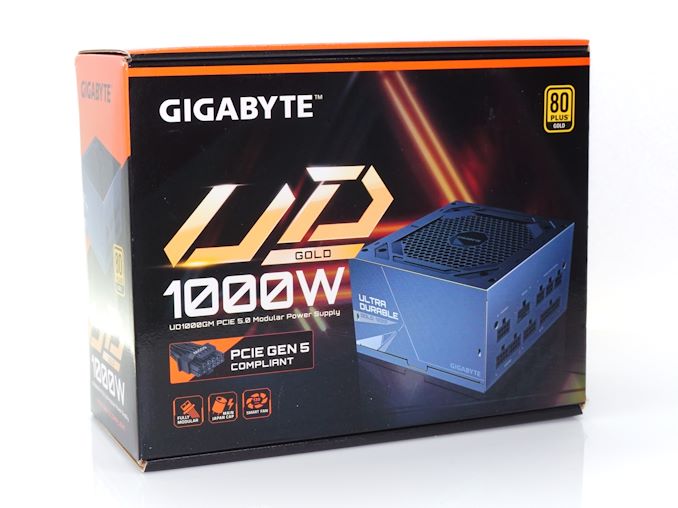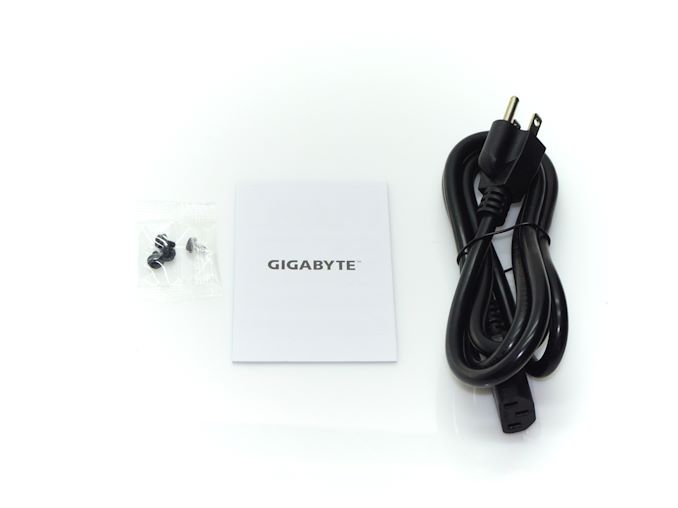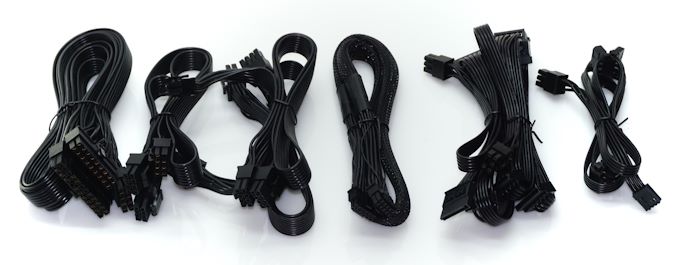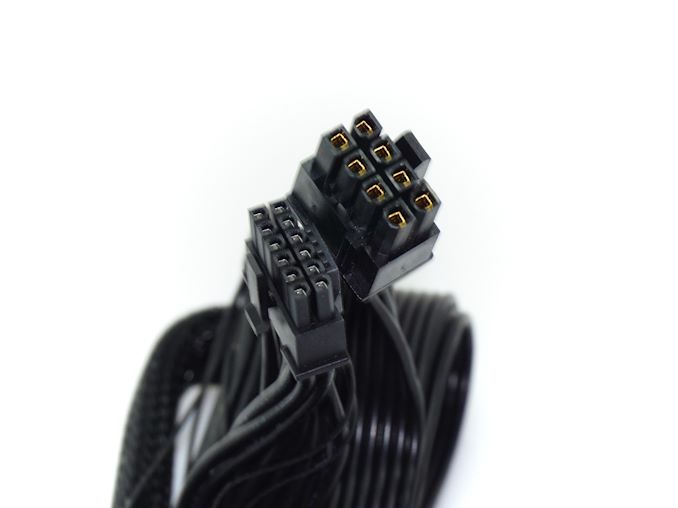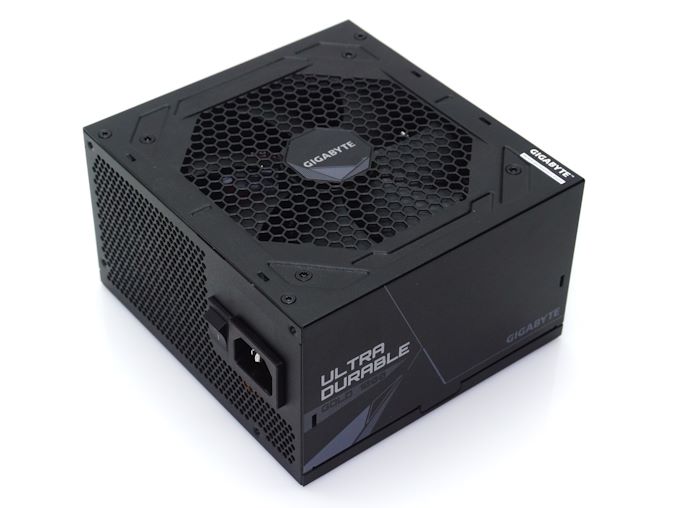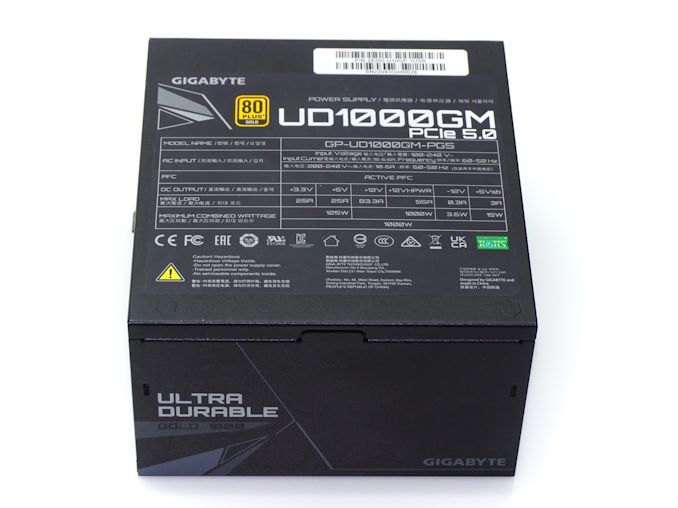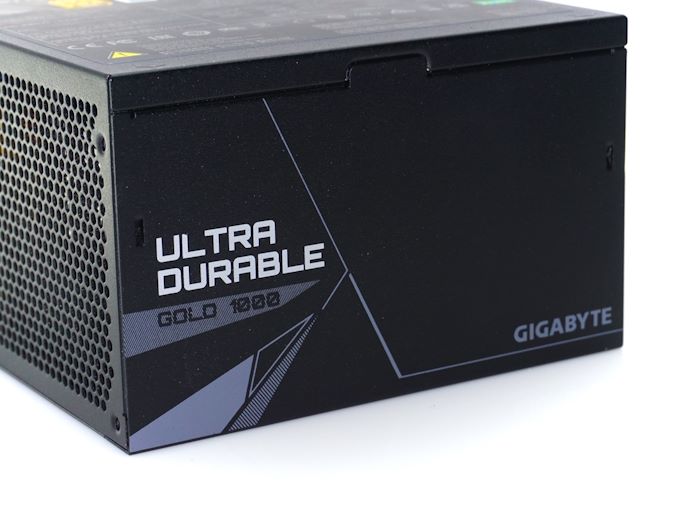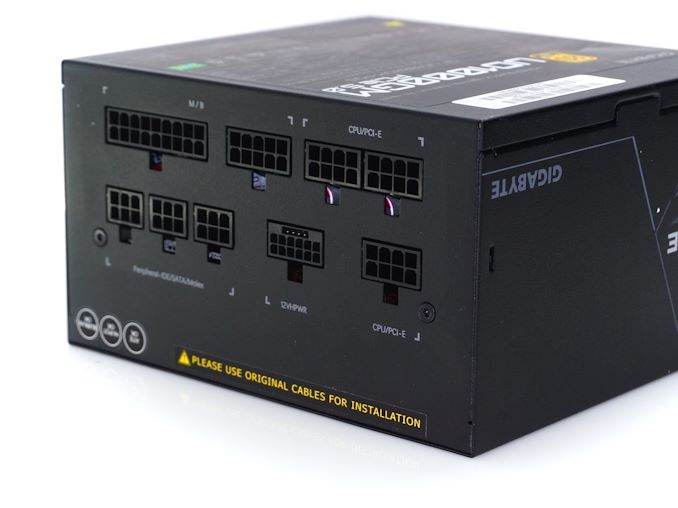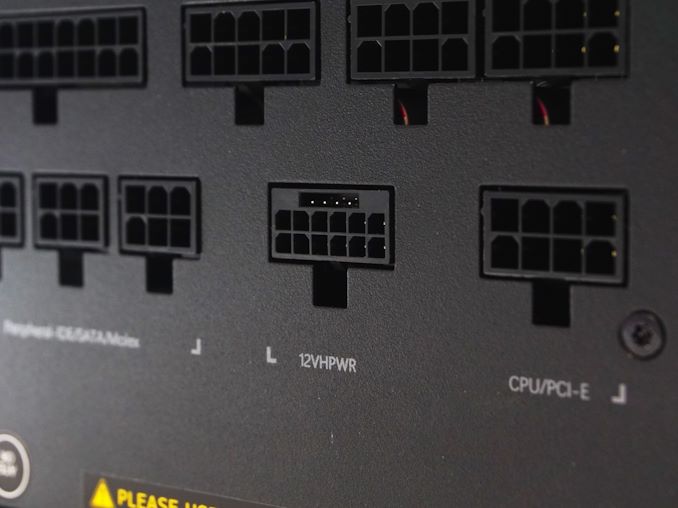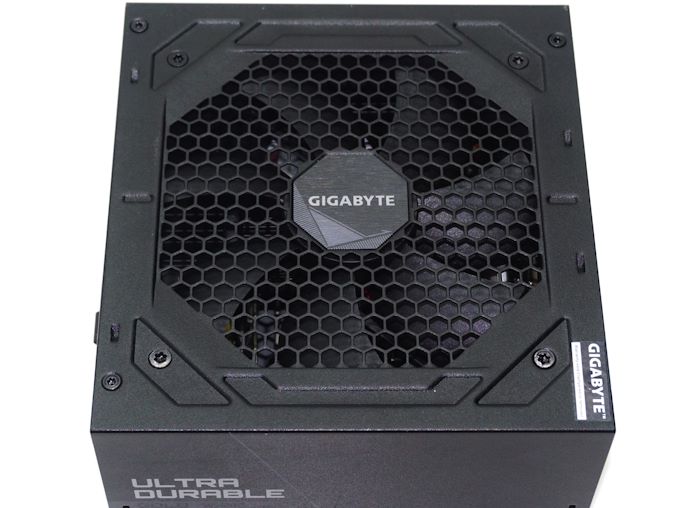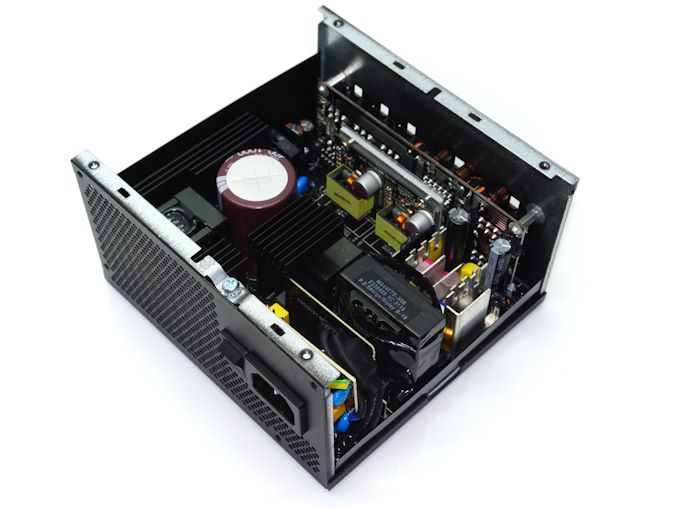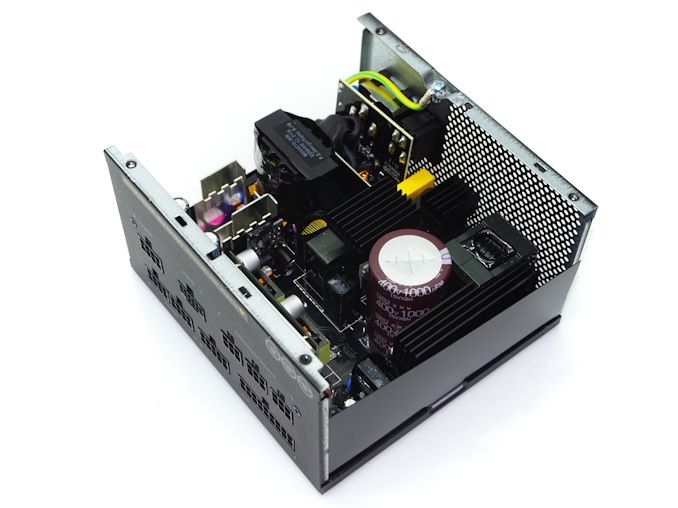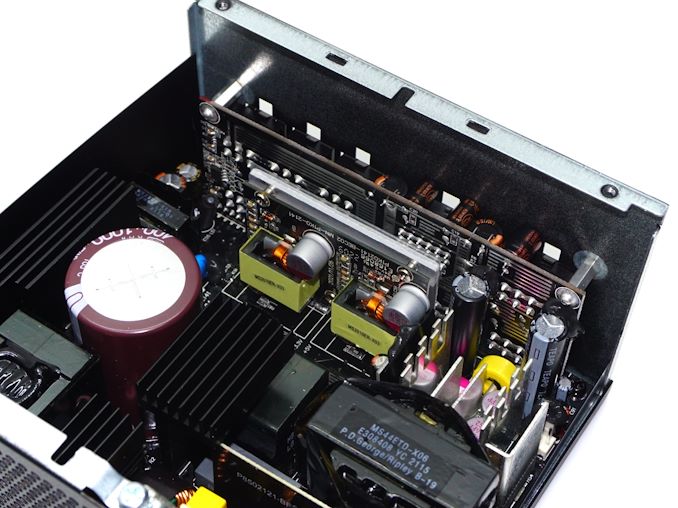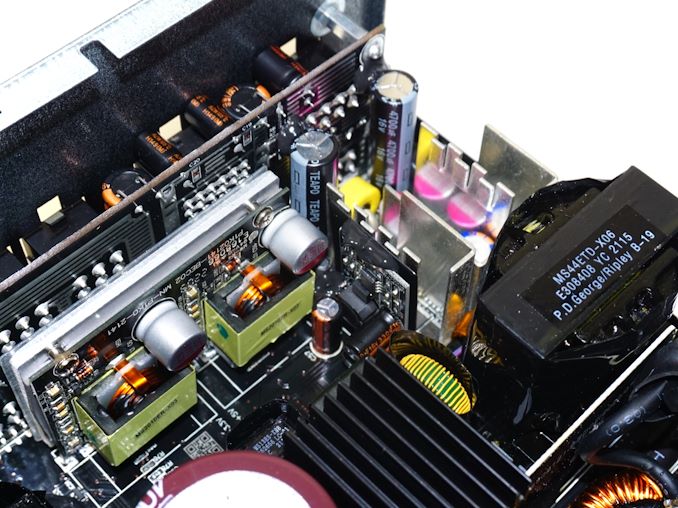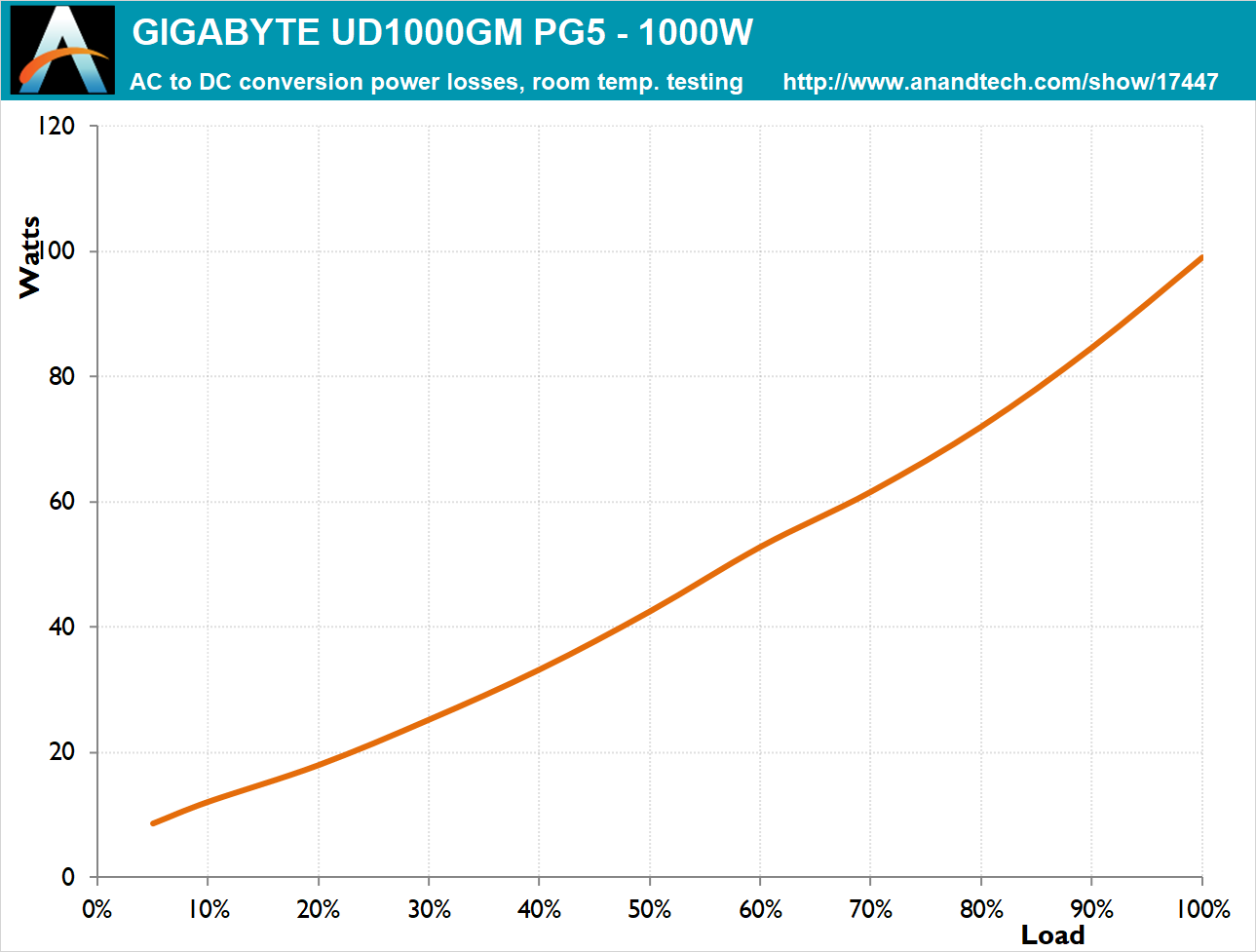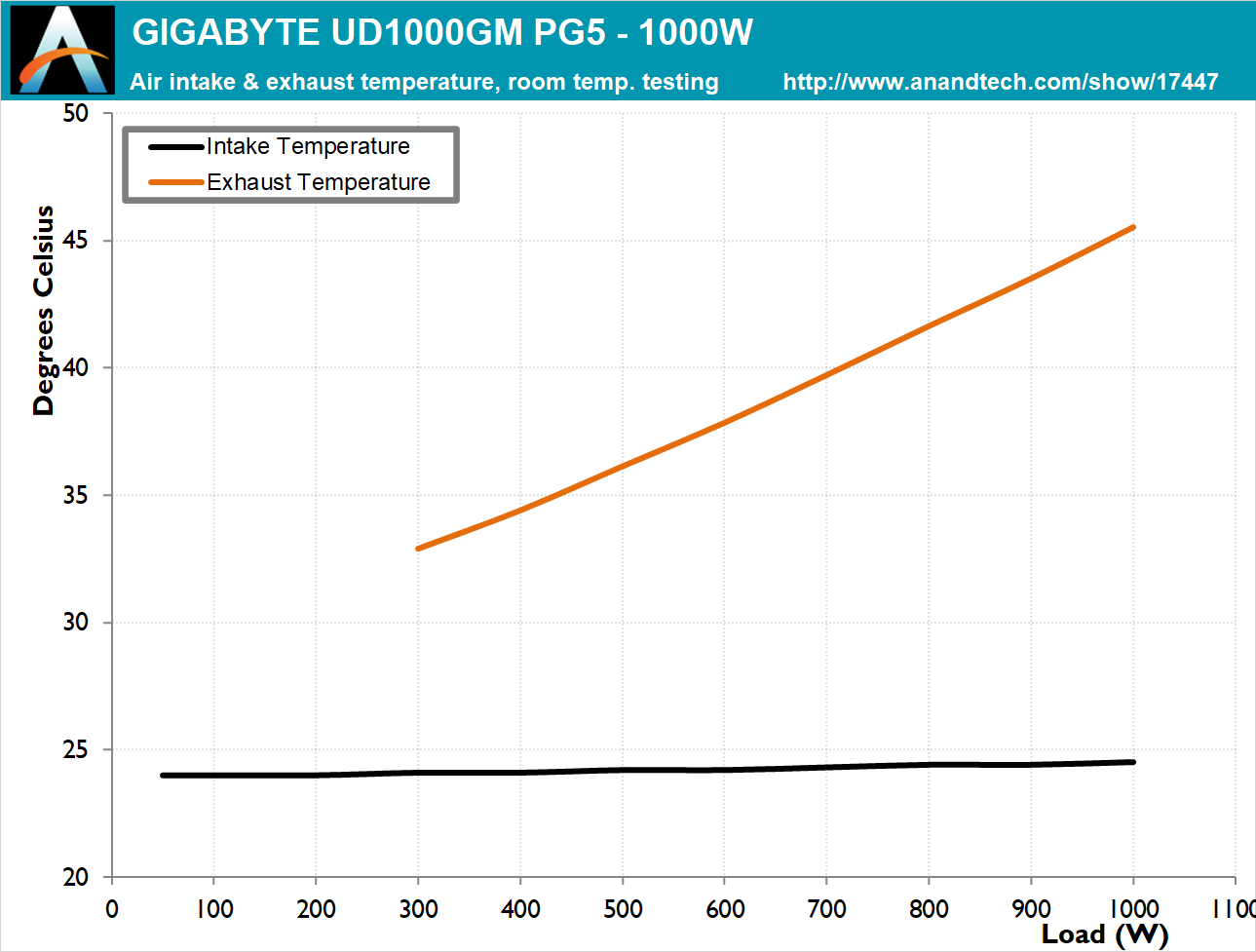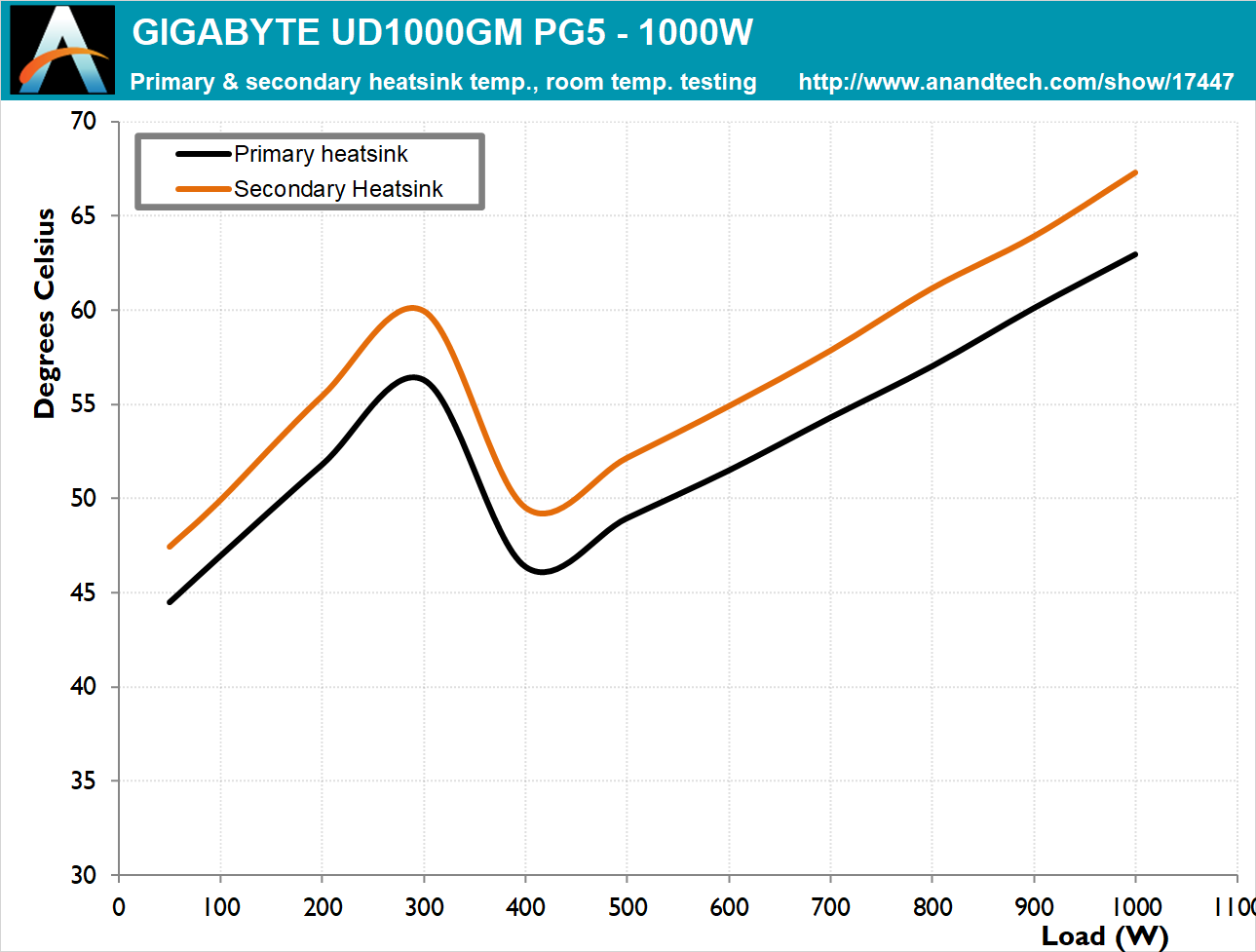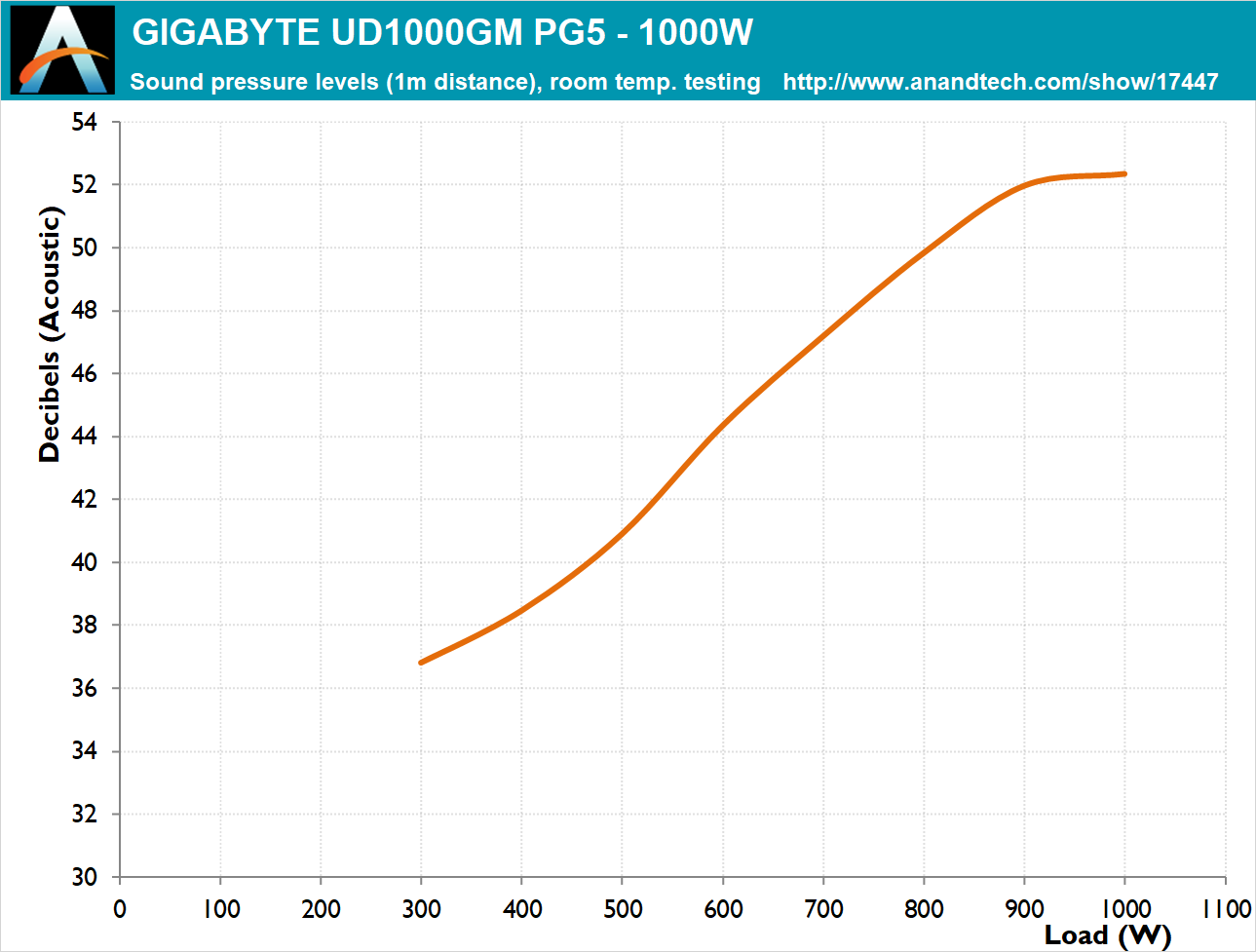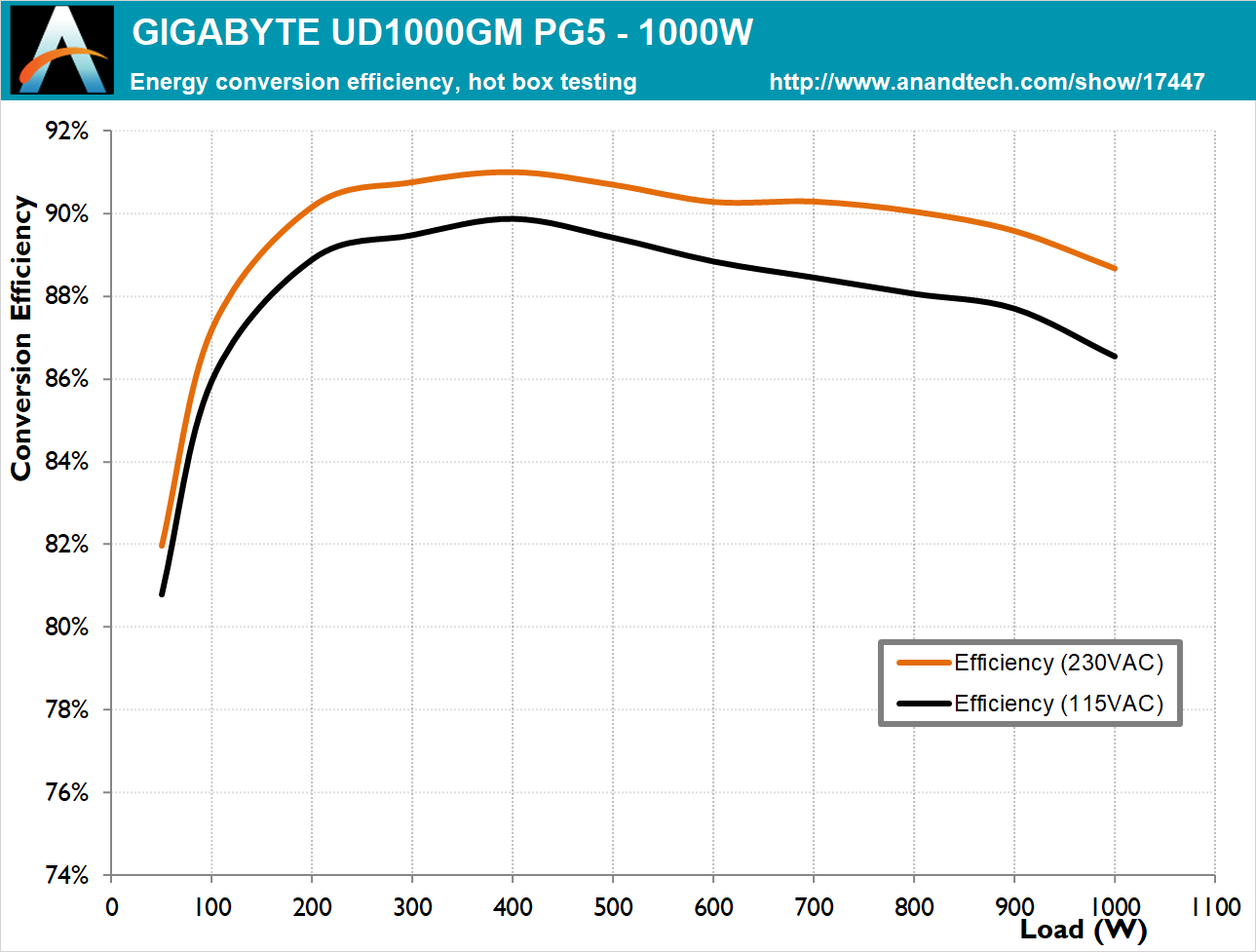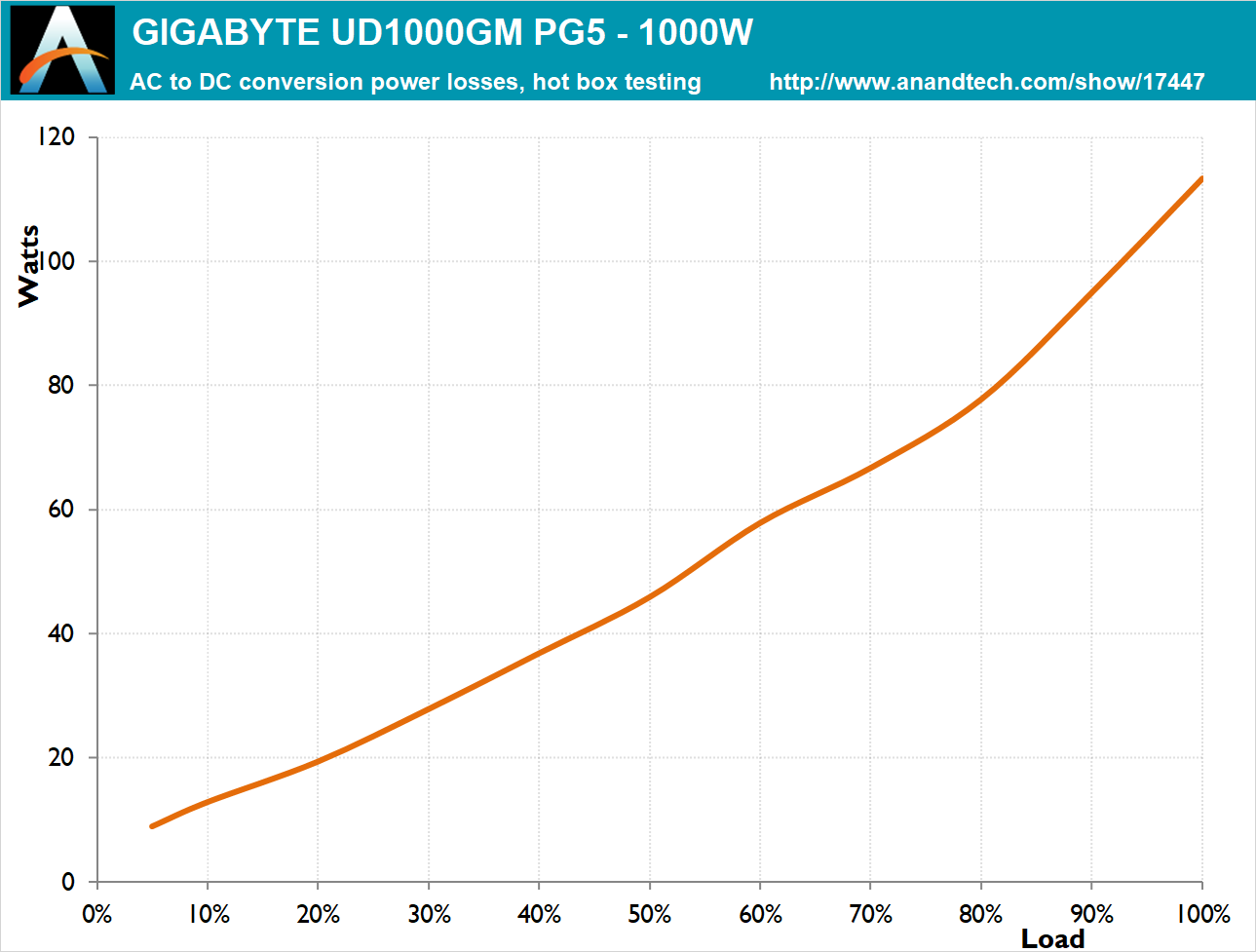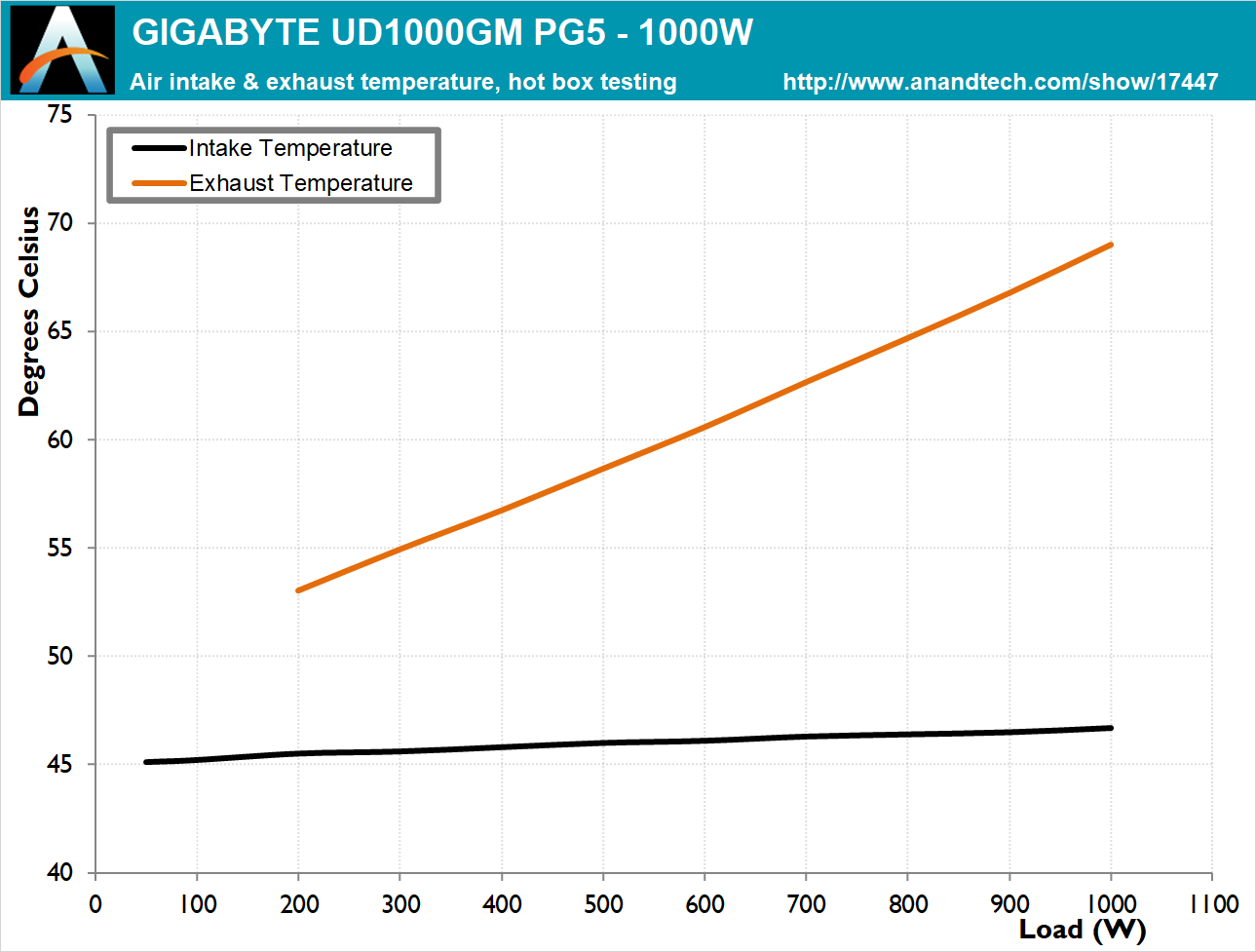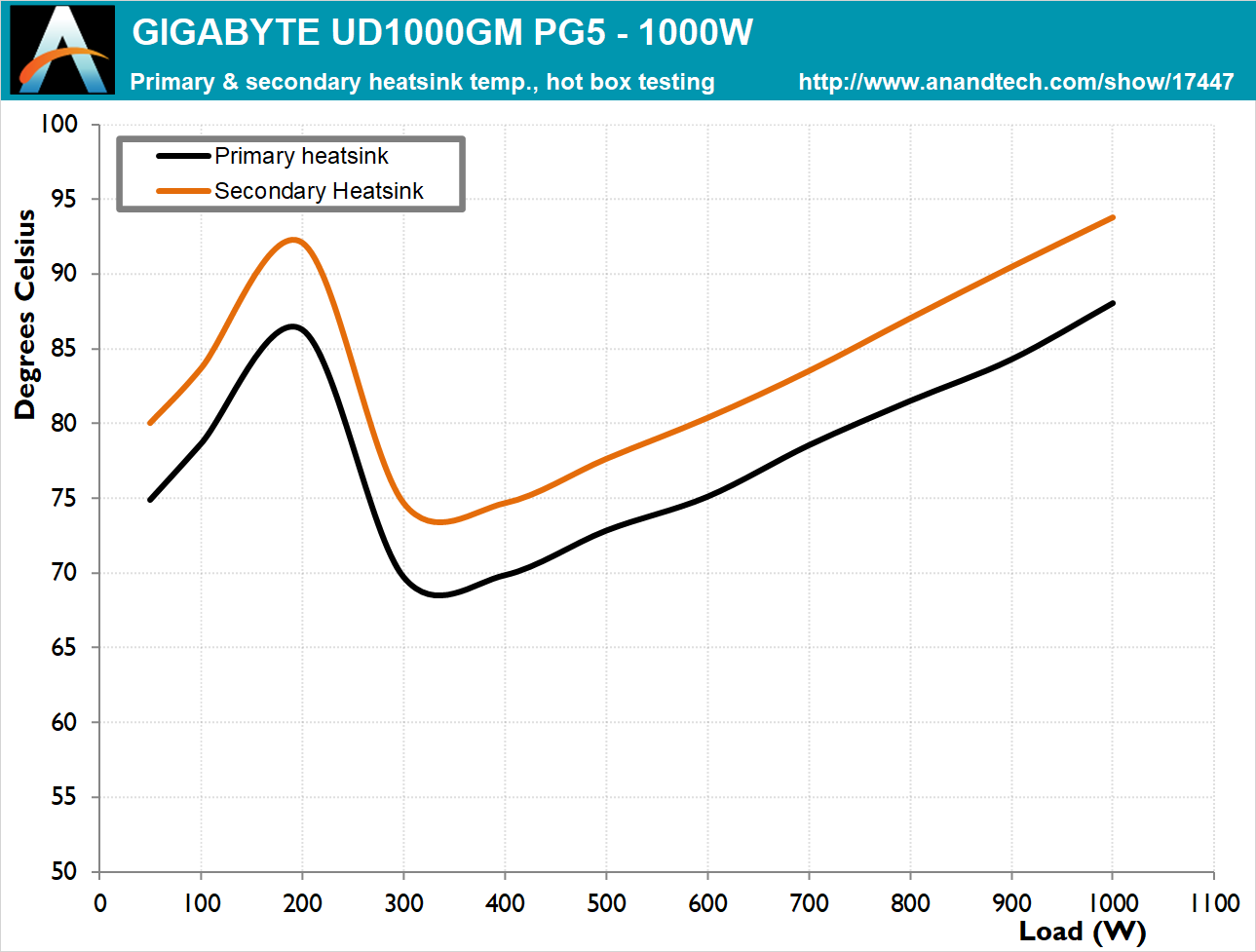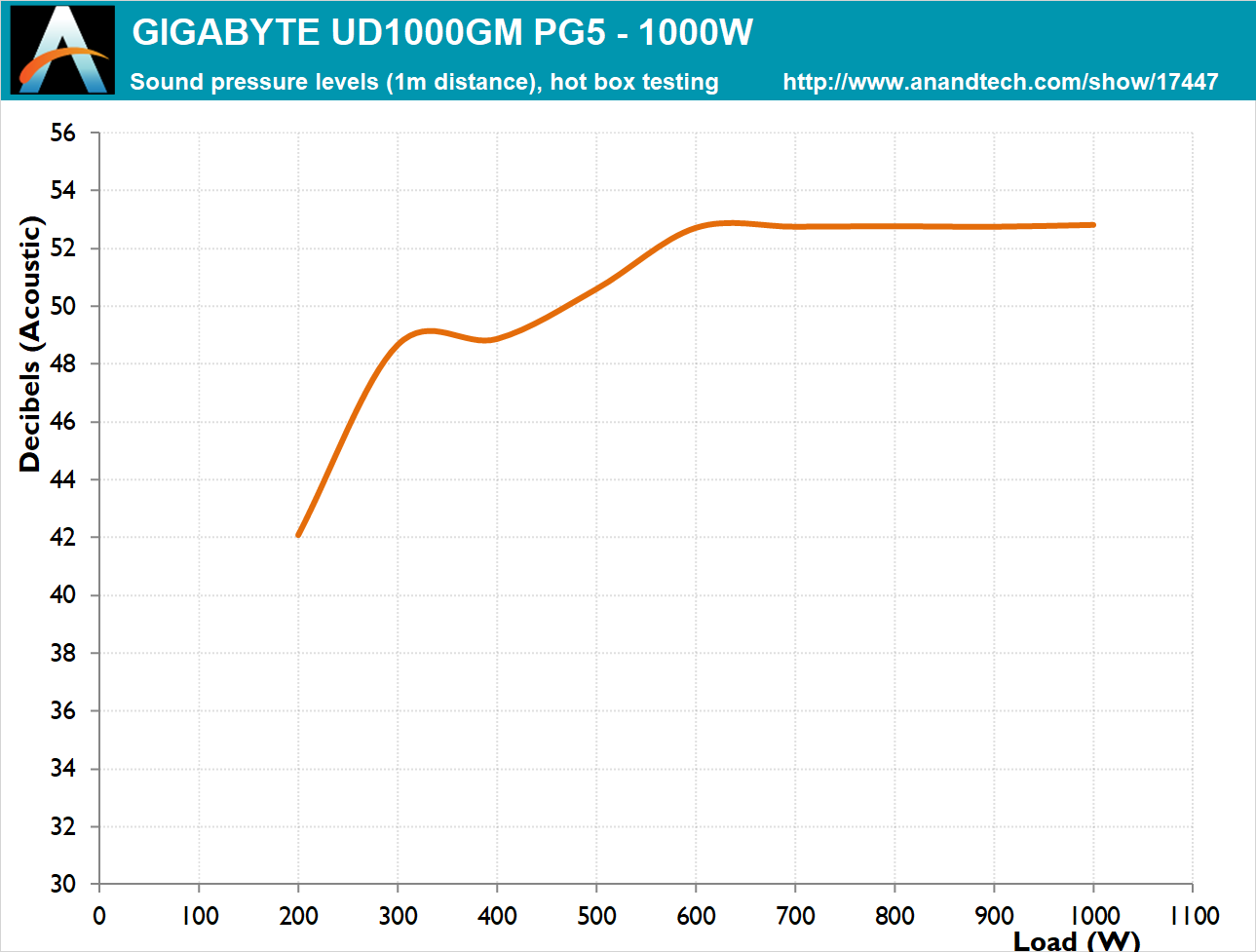
The Gigabyte UD1000GM PG5 1000W PSU Review: Prelude to ATX 3.0
2022-06-23GIGABYTE is a company renowned for its extensive range of motherboards and graphics cards, myriads of which passed through our testing labs. Regardless, the massive volumes at which GIGABYTE is producing motherboards and graphics cards has not keep the company from making diversification efforts towards virtually every segment of the PC market, ranging from laptops and mini PCs to gaming keyboards and chairs.
GIGABYTE is not a stranger in the power and cooling business, shyly marketing their first few PC PSUs over fifteen years ago. The company’s PSU releases were few and far between, with GIGABYTE grabbing a little piece of the market share but never making a significant effort to overwhelm the competition.
In today’s review, we are having a look at the GIGABYTE UD1000GM PG5, a powerful 80Plus Gold certified PC PSU. What makes the UD1000GM PG5 stand out from the crowd is the new 12+4 pin connector (12VHPWR connector), which is required by the ATX 3.0 standard. GIGABYTE does not claim that the UD1000GM PG5 is ATX 3.0 compliant, but having the 12VHPWR connector allows for partial compatibility – and conceivably future-proofs the PSU against upcoming graphics card releases.
| Power specifications ( Rated @ 50 °C ) | |||||
| AC INPUT | 100 – 240 VAC, 50 – 60 Hz | ||||
| RAIL | +3.3V | +5V | +12V | +5Vsb | -12V |
| MAX OUTPUT | 25A | 25A | 83.3A | 3A | 0.3A |
| 125W | 1000W | 15W | 3.6W | ||
| TOTAL | 1000W | ||||
GIGABYTE supplies the UD1000GM PG5 in an aesthetically captivating but relatively small cardboard box, hinting at the compact dimensions of the PSU in relation to its power output. Inside the box, the PSU is encased inside thin packaging foam that offers partial protection from shipping damage.
There are virtually no items bundled alongside with the UD1000GM PG5, with GIGABYTE sticking to the absolute basics. Only four typical mounting screws and an AC power cable can be found inside the packaging.
The GIGABYTE UD1000GM PG5 1000W PSU is a fully modular design, allowing for the removal of every DC power cable, including the 24-pin ATX connector. Most of the cables are bare, ribbon-like, with black wires and black connectors. The only exception is the new PCIe 5.0 cable that is made of black wires and has black connectors but also has black sleeving covering it.
| GIGABYTE UD1000GM PG5 | ||
| Connector type | Hardwired | Modular |
| ATX 24 Pin | – | 1 |
| EPS 4+4 Pin | – | 2 |
| EPS 8 Pin | – | – |
| PCI-E 5.0 | – | 1 |
| PCI-E 8 Pin | – | 4 |
| SATA | – | 8 |
| Molex | – | 3 |
| Floppy | – | 1 |
The new PCIe 5.0 cable is the highlight of this PSU. This connector is required by the new ATX 3.0 standard for any PC PSU that has an output greater than 450 Watts. Of course, the connector alone does not make the UD1000GM PG5 ATX 3.0 compliant, as the new standard brings numerous and significant changes to the market. However, it would help the UD1000GM PG5 to last longer.
Physically, these 16-pin connectors are not significantly larger than legacy 6/8-pin PCIe connectors, but they feature twelve pins plus four sensing pins. Out of the four sensing pins, two are mandatory and two are optional. The mandatory pins signal to the PCIe card the maximum power that the connector can handle, allowing the card to regulate its power draw. That makes the use of adapters on older PSUs tricky, as there is no way for the PSU to signal the card and their cables cannot handle a high current draw, so the preset output cannot be anywhere near 600 Watts. The only window for safely using adapters limits a passive adapter’s output to the minimum allowed by the new standard (150 Watts) or will require active adapters with multiple legacy connector inputs.
These new 12VHPWR connectors can deliver up to 600 Watts each. Depending on the PSU’s capability, the maximum wattage that it can provide is printed on the connector itself. The connector of the UD1000GM PG5 states that it can handle 600 Watts continuous, which is the maximum dictated by the ATX 3.0 standard.
External Appearance
The GIGABYTE UD1000GM PG5 PSU is very compact for a 1 kW unit. Measuring just 86 mm × 150 mm × 140 mm (H × W × D), the UD1000GM PG5 manages to fully comply with ATX standard dimensional specifications, making it compatible with virtually any ATX-compliant case. The steel chassis is sprayed with a satin black paint and several parts of it have been embossed to create a futuristic design. The fan’s finger guard also is part of the chassis itself.
GIGABYTE moved the sticker with the unit’s certifications and specifications at the top of the chassis, leaving the sides to feature an artistic design. The sticker is facing sideways, with the designer clearly thinking that this orientation would make reading it from a windowed side panel easier.
A typical on/off switch can be seen at the rear side of the unit, beside the power connector. There is evidence that a sticker was (or should have been) right under the power connector but we found nothing there. Most of the front side is covered by the connectors for the modular cables, with GIGABYTE strongly insisting that users should use only the provided cables for this PSU.
Internal Design
GIGABYTE entrusted the cooling of the UD1200GM PG5 to Jamicon, a sister company of the better-known Teapo. The Taiwanese fan manufacturer is not popular amongst PSU designers but their products are considered to be of above-average quality. The KF1225H1H 120 mm fan inside the UD1200GM PG5 is a rather basic model, with a rifle-bearing engine. This fan feels like an odd choice for a PSU with a 10-year long warranty and can incite a lot of RMA requests after that many years.
Both the OEM and the platform of the GIGABYTE UD1200GM PG5 are completely new to us. GIGABYTE entrusted the manufacturing of this PSU to Xiamen Metrotec Electronic Industry Co (or MEIC), a Chinese OEM whose products we have not seen before. Having been around since 2007, MEIC is not a new company but they have been mostly active with producing smaller products, such as chargers and power banks.
The filtering stage of the GIGABYTE UD1200GM PG5 is textbook, with a total of four Y capacitors, two X capacitors, and two filtering inductors leading to a dual input rectifying bridge configuration. The bridges are placed on a sizable heatsink. The passive APFC components are a colossal 400V/1000μF APFC capacitor made by Nippon Chemi-Con and an equally massive filtering coil. The inrush current of this configuration will be horrendous and can lead to circuit breaker tripping if Type B MCBs or low-rating MCBs are in use. The active APFC components are on a long heatsink right across the edge of the PCB.
Two transistors form a typical half-bridge inversion topology at the primary side of the unit, while six MOSFETs generate the 12V line at the secondary side of the transformer. The 3.3V and 5V lines are generated via the DC-to-DC conversion circuits. This is a very typical configuration for an 80Plus Gold certified unit. All of the secondary capacitors, electrolytic and polymer alike, are provided by Teapo and Lelon, both Taiwanese manufacturers. Teapo is a manufacturer we frequently see the products of in mid-tier products. Lelon is not as known as Teapo but their products are of about equal quality. Regardless, enthusiasts would probably hope to find something better inside a high-tier PSU with such a long warranty.
For the testing of PSUs, we are using high precision electronic loads with a maximum power draw of 2700 Watts, a Rigol DS5042M 40 MHz oscilloscope, an Extech 380803 power analyzer, two high precision UNI-T UT-325 digital thermometers, an Extech HD600 SPL meter, a self-designed hotbox and various other bits and parts. For a thorough explanation of our testing methodology and more details on our equipment, please refer to our How We Test PSUs – 2014 Pipeline post.
GIGABYTE’s UD1000GM PG5 obviously earned its 80Plus Gold certification rating with an AC input of 115 VAC. It is not required for a product to meet the certification requirements for any given input voltage and most manufacturers do seek to meet the requirements at 115 VAC, where the requirements are substantially lower and it is therefore easier for them to be certified. The UD1000GM PG5 has an average nominal load range (20% to 100% of the unit’s capacity) efficiency of 91.1% when powered from a 230 VAC source, which drops down to 89.5% when powered from a 115 VAC source. It fails to meet the half-load 92% efficiency requirements of the 80Plus Gold certification when powered by a 230 VAC source but does meet the agency’s requirements for a 115 VAC input – even if only barely.
The GIGABYTE UD1000GM PG5 has a semi-passive thermal control circuitry, meaning that the fan will not operate when the unit’s load is very low. The fan will start when the load is a little under 300 Watts. While the internal temperature of the PSU remains reasonably low at all times, the fan becomes clearly audible at half load and downright loud once the unit is loaded, reaching its maximum speed at 90% load with the unit operating at room temperature.
Despite its lengthy warranty, the components of the UD1000GM PG5 left us unimpressed and our testing verified our initial assumptions. The PSU suffers when it has to operate inside a very hot environment, with the efficiency taking a brutal drop at high loads. The average efficiency reduction of 1% across the nominal load range does not seem that high but the efficiency drop is very high when the load is greater than 800 Watts, suggesting severe thermal stress.
Despite the very high ambient temperature, the fan of the GIGABYTE UD1000GM PG5 failed to start right away with the unit operating inside our hotbox. This resulted to worryingly high temperature readings at low loads. Once the fan started, the temperature dropped significantly, rising little by little as the load increased. The temperature does reach high figures again once the unit is heavily loaded but always stays within operating levels.
Even though it does not start right away, as expected, the 120 mm fan is giving its all to keep the GIGABYTE UD1000GM PG5 cool enough under these adverse operating conditions. The very moment is starts, the fan will be audible to the user, rapidly increasing in speed as the load increases. It reaches its maximum speed when the load is just a little higher than 50% of the unit’s capacity, valiantly trying to keep the PSU reliable and operational. The noise figures are above 50 dB(A), a figure that will annoy even the most tolerant of people if they are not wearing headphones – or ear protection.
As part of our testing, we also check output parameters are within specifications, as well as voltage ripple and line noise.
| Main Output | ||||||||
| Load (Watts) | 203.21 W | 507.02 W | 757.83 W | 1009.06 W | ||||
| Load (Percent) | 20.32% | 50.7% | 75.78% | 100.91% | ||||
| Amperes | Volts | Amperes | Volts | Amperes | Volts | Amperes | Volts | |
| 3.3 V | 2.27 | 3.45 | 5.66 | 3.45 | 8.5 | 3.4 | 11.33 | 3.37 |
| 5 V | 2.27 | 5.18 | 5.66 | 5.16 | 8.5 | 5.09 | 11.33 | 5.06 |
| 12 V | 15.1 | 12.16 | 37.75 | 12.14 | 56.62 | 12.11 | 75.5 | 12.1 |
| Line | Regulation (20% to 100% load) |
Voltage Ripple (mV) | |||||
| 20% Load | 50% Load | 75% Load | 100% Load | CL1 12V |
CL2 3.3V + 5V |
||
| 3.3V | 2.4% | 12 | 18 | 18 | 18 | 16 | 24 |
| 5V | 2.2% | 16 | 18 | 20 | 22 | 18 | 26 |
| 12V | 0.5% | 16 | 24 | 28 | 32 | 30 | 24 |
The electrical performance of the GIGABYTE UD1000GM PG5 is admittedly better than we initially surmised. There is strong filtering on the primary voltage output, with the GIGABYTE UD1000GM PG5 displaying a maximum ripple of 32 mV on the 12V line under maximum load, which is around 25% of the recommended design limit. The voltage regulation of the 12V line is equally impressive, at less than 0.5%. GIGABYTE’s engineers neglected the 3.3V and 5V lines a little, as the regulation is at about 2.2% and the voltage ripple goes up to 45% of the design limit. These power quality figures are very good for a product of this tier.
The announcement of Intel’s new ATX v3.0 specifications was bound to start a race, as every company is looking to establish itself among the early adopters as a means of growing with the larger market. GIGABYTE took a little different approach here – instead of developing a whole new platform capable of fulfilling all of ATX v3.0 requirements, they simply upgraded one of their existing units and added one 600 Watt 12VHPWR connector to it.
It is the first time we have ever seen a platform from Xiamen Metrotec, the OEM of this unit. The OEM obviously needs to be following the design and guidance of the final developer, which is GIGABYTE in this case. Nevertheless, it appears that they are doing a very good job with their core topology designs and assembly process, both of which we found to be very clean. However, the quality of the components used by GIGABYTE for the production of the UD1000GM PG5 is wanting. The PSU comes with a very long warranty but most of the components, passive and active alike, are of middling quality. Taking into account the high internal temperatures that the UD1000GM PG5 reaches under stress, we feel that GIGABYTE’s engineers are being a little too confident.
When it comes to performance, the GIGABYTE UD1000GM PG5 will not be entering the hall of fame. However, all things considered, it is fairly well-balanced. The power quality of the unit is very good, with excellent regulation and filtering on the primary voltage line and adequate figures on the secondary lines. It is adequately efficient so as to achieve an 80Plus Gold certification with an input voltage of 115 VAC, yet only barely, so there is room for improvement. The only real disadvantage of the UD1000GM PG5 is its small size, which forced the engineers to use a smaller 120 mm fan, making the unit run both hotter and louder than most equally powerful units. This only becomes a true issue while the unit is heavily loaded though, and should not be bothering typical users while they simply want to do their work or browse. The performance of the GIGABYTE UD1000GM PG5 is unimpressive by today’s standards but, taking into account the retail price of the unit, it is good overall.
The true advantage that GIGABYTE’s UD1000GM PG5 currently has is simple – no competition. It is virtually the only unit with a 12VHPWR connector currently available. If someone needs to purchase a powerful PSU right now and expects to be upgrading their graphics card in the near future and/or often, the UD1000GM PG5 is essentially the only choice with respect to forward-compatibility. That being said, one has to remember that this unit does not fully fulfill the ATX v3.0 requirements – it is unlikely but not unfathomable that the UD1000GM PG5 may not be able to handle future graphics card releases that could produce excessive transient loads.
Regardless, the current retail price of $160 is reasonable for an 80Plus Gold certified unit with that kind of output, so buyers are not paying a severe premium for the new 12VHPWR connector. However, if you are not in a rush to purchase a PSU right now, we err on the side of caution, and recommend waiting for actual ATX v3.0 compliant units to pop into the market.
